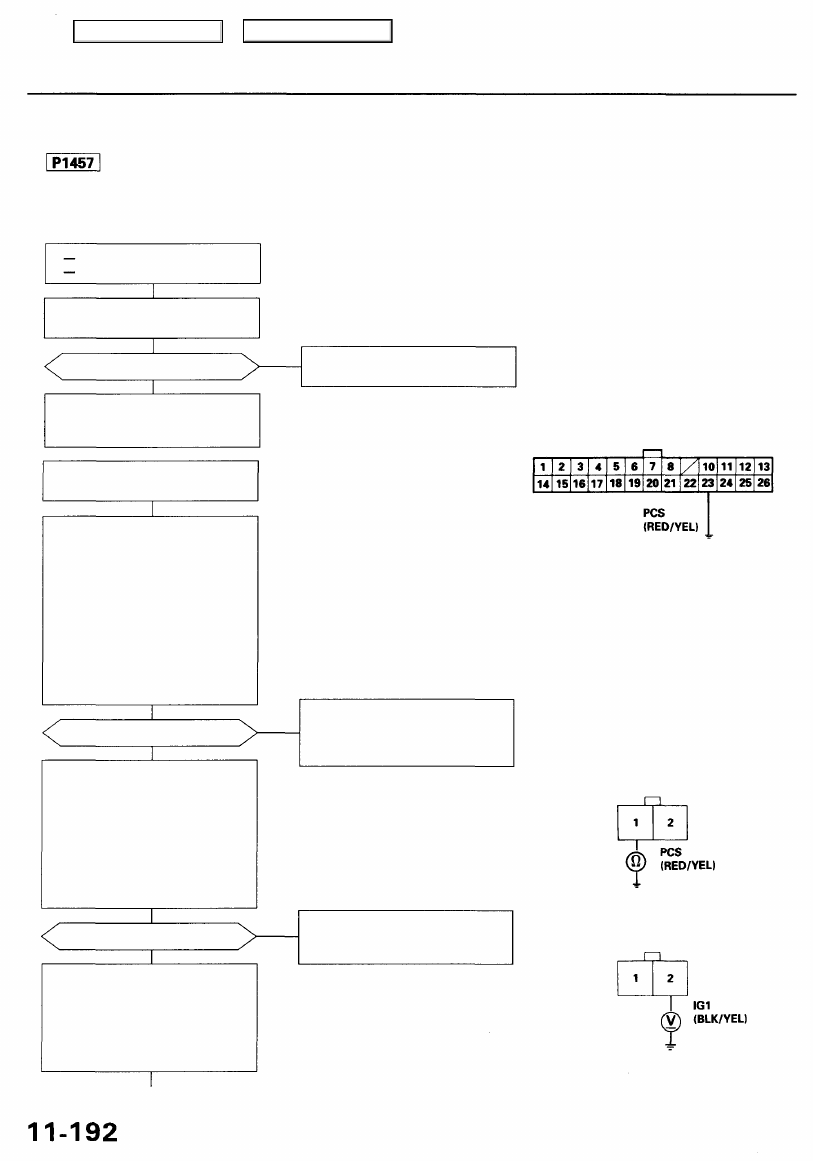Acura RL (1996-2004 year). Manual - part 407

Emission Control System
Evaporative Emission (EVAP) Controls (cont'd)
The scan tool indicates Diagnostic Trouble Code (DTC) P1457: Evaporative Emission (EVAP) control system leak
detected (EVAP control canister system).
'96 - 99 models:
Troubleshooting Flowchart
The MIL has been reported on.
DTC P1457 is stored.
Do the fuel tank pressure sensor
).
Is the fuel tank pressure sensor OK?
Fuel tank pressure sensor is OK.
Do the EVAP purge control
solenoid valve.
EVAP purge control solenoid
valve test.
Check the EVAP purge control
solenoid valve:
1. Disconnect the vacuum hose
from the EVAP purge control
solenoid valve, and connect a
hose and a vacuum pump to
the EVAP purse control
solenoid valve.
2. Connect the PCM connector
terminal A23 to the body
ground with a jumper wire.
3. Turn the ignition switch ON (II).
4. Apply vacuum to the hose.
Dose the valve hold vacuum?
Check for an open in the wire
(PCS line):
1. Turn the ignition switch OFF.
2. Disconnect the EVAP purge
control solenoid valve 2P con-
nector.
3. Check for continuity between
the EVAP purge control
solenoid valve 2P connector ter-
minal No. 1 and body ground.
Is there continuity?
YES
Check for an open in the wire
(IG1 line):
1. Turn the ignition switch ON (II).
2. Measure voltage between the
EVAP bypass solenoid valve 2P
connector terminal No. 2 and
body ground.
Replace the fuel tank pressure
sensor.
PCM CONNECTOR A (26P)
Wire side of
female
terminals
EVAP purge control solenoid
valve is OK. Do the EVAP bypass
solenoid valve test (see page
).
EVAP PURGE CONTROL SOLENOID
VALVE 2P CONNECTOR (C127)
Repair open in the wire between
the EVAP purge control solenoid
valve and PCM (A23).
NO
Wire side of
female
terminals
YES
NO
JUMPER
WIRE
YES
NO
Main Menu
Table of Contents